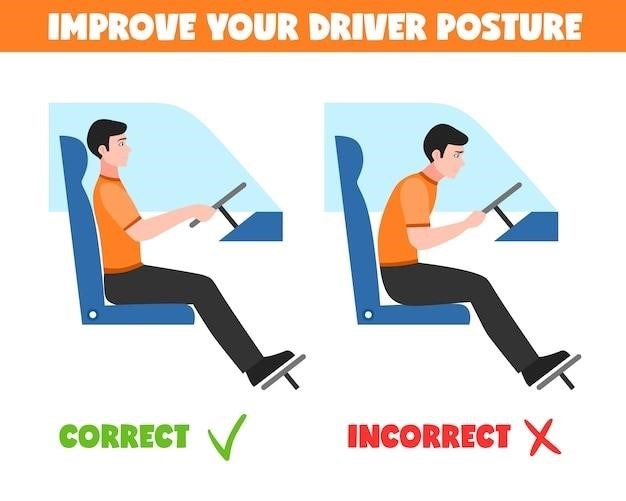Manual Traction Techniques
Manual traction involves a therapist using their hands to apply controlled pulling force to the spine. This technique aims to gently stretch muscles, separate vertebrae, and decompress spinal joints to alleviate pain and improve mobility. Various hand placements and pulling forces are used depending on the specific spinal region being treated. The duration and intensity of the traction are carefully controlled by the therapist to achieve optimal results.
Types of Manual Traction
Manual traction techniques are categorized based on the area of the spine treated and the specific approach used. Cervical traction focuses on the neck, employing gentle, controlled pulling on the head to create space between vertebrae. Lumbar traction targets the lower back, with the therapist applying traction to the pelvis and legs. Specific techniques within each category include sustained traction, where constant force is maintained, and intermittent traction, involving alternating periods of force and relaxation. The choice of technique depends on the patient’s condition, pain location, and the therapist’s assessment. Variations in hand placement and the direction of the applied force further tailor the treatment to individual needs. Some techniques incorporate additional maneuvers, such as joint mobilization, to enhance the effectiveness of the traction. The therapist’s expertise is crucial in selecting and executing the appropriate type of manual traction.
Cervical Traction Procedures
Cervical traction procedures involve carefully applying traction to the neck region. The therapist typically uses their hands, placing one hand firmly at the base of the skull and the other supporting the chin. Gentle, controlled pulling is applied, creating separation between the cervical vertebrae. The force and duration are carefully adjusted based on the patient’s response and tolerance. Different approaches exist, such as sustained traction, where the force is constant, and intermittent traction, which alternates between periods of traction and rest. The therapist may incorporate additional techniques, such as gentle mobilization of the cervical spine, to improve range of motion and address any joint restrictions. The patient’s position and the therapist’s hand placement are crucial for effective and safe cervical traction. Proper technique minimizes the risk of injury and maximizes therapeutic benefits. Accurate assessment of the patient’s condition is vital before commencing any cervical traction procedure.
Lumbar Traction Applications
Manual lumbar traction involves applying traction to the lower back. The therapist may use their hands directly or employ a belt or other device to facilitate the traction. The patient is usually positioned prone or supine, depending on the specific needs and comfort. The therapist carefully controls the force and direction of the traction, aiming to gently separate the lumbar vertebrae and alleviate pressure on the intervertebral discs. This can help relieve pain and muscle spasms associated with conditions such as lumbar disc herniation or spinal stenosis. The application of lumbar traction often involves a combination of sustained and intermittent traction forces. The treatment duration and intensity are adjusted based on the patient’s response, ensuring comfort and safety. Proper positioning and the therapist’s skilled hand placement are essential for effective lumbar traction, minimizing discomfort and maximizing therapeutic benefits. Post-treatment, the therapist may advise on exercises to maintain the improvement gained.

Benefits and Indications of Manual Traction
Manual traction offers pain relief, muscle relaxation, and improved spinal mobility and circulation. It’s indicated for various spinal conditions causing pain and limited movement, offering a non-invasive treatment option.
Pain Relief and Muscle Relaxation
Manual traction effectively alleviates pain by gently separating compressed spinal structures, such as intervertebral discs and facet joints. This decompression reduces pressure on nerve roots, a common source of pain in conditions like sciatica and cervical radiculopathy. The stretching action of manual traction also helps relax strained or spasmed muscles surrounding the spine. Reduced muscle tension further contributes to pain reduction and improved range of motion. The gentle, controlled nature of manual traction makes it a suitable pain management technique for many individuals. By addressing both the mechanical and muscular components of spinal pain, manual traction provides a holistic approach to pain relief and promotes overall musculoskeletal well-being. The therapeutic effects are often immediate, offering patients significant comfort during and after treatment sessions.
Improved Spinal Mobility and Circulation
Manual traction’s gentle stretching action helps restore normal spinal mobility, improving flexibility and range of motion. Stiffness and restricted movement, often associated with spinal conditions, are effectively addressed by the traction’s ability to separate compressed vertebrae and elongate shortened soft tissues. This increased mobility facilitates easier and more comfortable movement, reducing pain and improving overall function. Furthermore, the traction process enhances circulation in the spinal region. Improved blood flow delivers essential nutrients and oxygen to tissues, promoting healing and reducing inflammation. This circulatory benefit speeds up recovery and reduces the likelihood of further complications. The combined effects of improved mobility and circulation lead to a significant enhancement in the patient’s overall well-being and quality of life.
Contraindications and Precautions
Manual traction is not suitable for all patients. Certain conditions, such as osteoporosis, spinal instability, or recent spinal surgery, may necessitate caution or contraindicate its use. A thorough assessment by a qualified healthcare professional is crucial before initiating treatment.
Conditions Requiring Caution
Manual traction should be approached cautiously in individuals with certain conditions. Patients with osteoporosis, a condition characterized by weakened bones, are at increased risk of fracture. Those with spinal stenosis, a narrowing of the spinal canal, may experience increased pressure on the spinal cord with traction. Rheumatoid arthritis, an inflammatory condition affecting the joints, may make the spine more susceptible to injury during traction. Spondylolisthesis, a forward slippage of one vertebra over another, also requires careful consideration, as traction could exacerbate the instability. Recent spinal fractures or surgeries are absolute contraindications for manual traction. Pregnant women and those with certain cardiovascular conditions may also require modifications or alternative treatments.
Potential Risks and Side Effects
While generally safe when performed by trained professionals, manual traction can pose some risks. Muscle soreness or temporary stiffness are common, typically resolving within a few days. In rare cases, improper technique or excessive force can lead to muscle strains, ligament sprains, or even fractures, particularly in individuals with pre-existing conditions like osteoporosis. Nerve irritation is a potential complication, manifesting as increased pain, numbness, or tingling in the arms or legs. Dizziness or lightheadedness can occur due to changes in blood pressure. Patients with certain cardiovascular conditions might experience adverse effects related to blood pressure fluctuations. It’s crucial to communicate any discomfort or unusual sensations to the therapist immediately. Proper screening and careful technique minimize these risks.

Manual Traction vs. Mechanical Traction
Manual traction uses a therapist’s hands; mechanical traction employs a motorized device. Manual offers personalized adjustments, while mechanical provides consistent, potentially higher forces. The best approach depends on individual needs and condition.
Comparison of Techniques
Manual and mechanical traction diverge significantly in their application and effects. Manual traction, performed by a therapist’s hands, allows for immediate feedback and precise adjustments based on patient response. The therapist can modify force, angle, and duration in real-time, adapting to individual needs and anatomical variations. This personalized approach is particularly valuable for patients with complex conditions or those requiring gentle, targeted treatment. Conversely, mechanical traction utilizes a device to deliver consistent, often greater pulling forces. Pre-programmed settings allow for standardized treatment protocols, beneficial for conditions requiring sustained traction. However, the lack of immediate feedback and adaptability may limit its effectiveness for certain patients. The choice between manual and mechanical traction hinges on the specific clinical scenario, patient characteristics, and treatment goals.
Choosing the Right Approach
Selecting the optimal traction method—manual or mechanical—requires a comprehensive assessment of the patient’s condition and individual needs. Factors such as the specific spinal region affected, the severity of symptoms, the presence of any contraindications, and the patient’s tolerance to traction influence the decision-making process. Manual traction, with its adaptability and personalized approach, is often preferred for patients with complex conditions or those requiring subtle adjustments during treatment. In contrast, mechanical traction, offering consistent force and pre-programmed settings, might be more suitable for standardized protocols and conditions requiring prolonged, sustained traction. A thorough evaluation by a qualified healthcare professional is crucial to determine the most appropriate and effective traction technique for individual patient care, ensuring both safety and optimal therapeutic outcomes.
Clinical Applications and Protocols
Manual traction finds use in treating various spinal conditions, including neck and back pain stemming from muscle spasms, disc herniations, and facet joint dysfunction. Treatment protocols vary based on the individual’s needs and diagnosis.
Treatment Protocols for Specific Conditions
Manual traction protocols are tailored to the specific condition. For cervical radiculopathy, gentle, sustained traction might be employed to reduce nerve root compression and alleviate pain. In cases of lumbar spinal stenosis, intermittent traction may be preferred to create space between vertebrae. Acute muscle spasms often respond well to short bursts of manual traction followed by sustained stretches. Degenerative disc disease may benefit from a combination of traction and mobilization techniques to improve joint mobility and reduce pain. The therapist adjusts the force, duration, and direction of the traction based on the patient’s response and the specific anatomical structures involved; Careful assessment and monitoring are crucial for optimizing treatment outcomes and ensuring patient safety.
Dosage and Duration Guidelines
Dosage and duration in manual traction are individualized, depending on the patient’s condition, response to treatment, and the therapist’s clinical judgment. Treatment sessions typically range from 10 to 30 minutes, with the number of sessions varying depending on the severity and chronicity of the condition. The force applied during manual traction is carefully controlled; it should be comfortable for the patient and not cause pain. Progression of treatment involves gradual increases in the duration and intensity of the traction, as tolerated by the patient. Regular assessment of the patient’s pain levels, range of motion, and functional abilities helps guide the dosage and duration of treatment. It’s essential to closely monitor the patient’s response to avoid over-stretching or causing discomfort.
